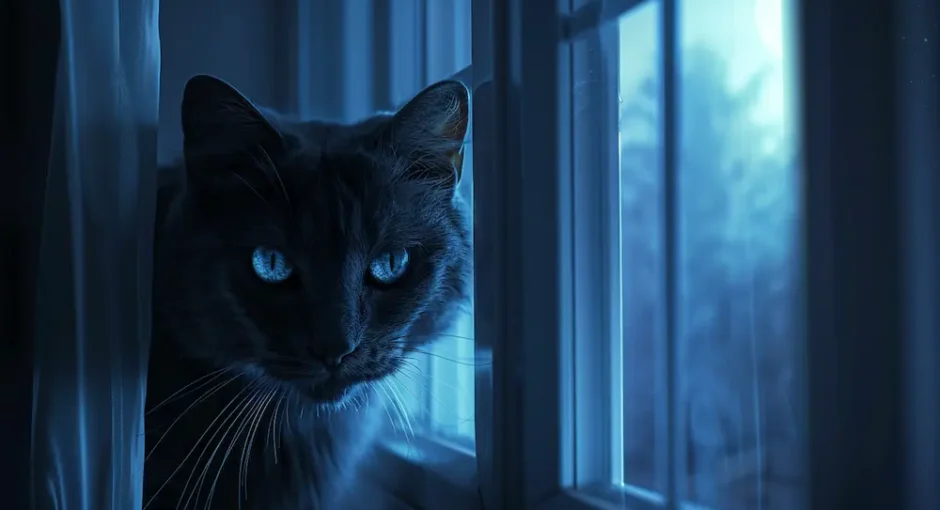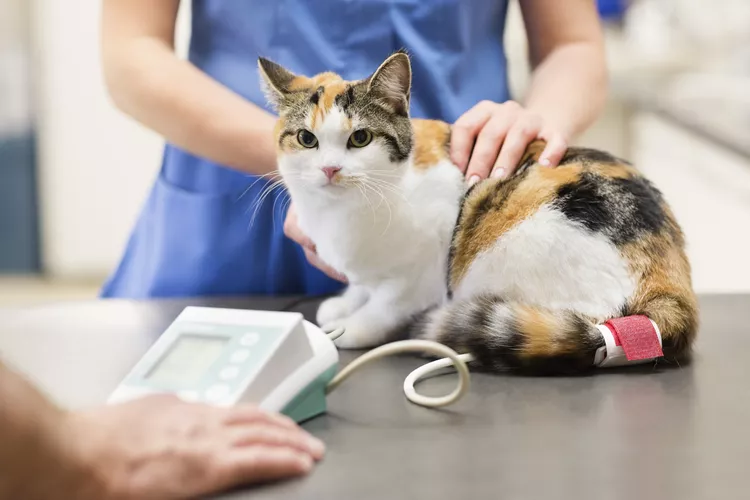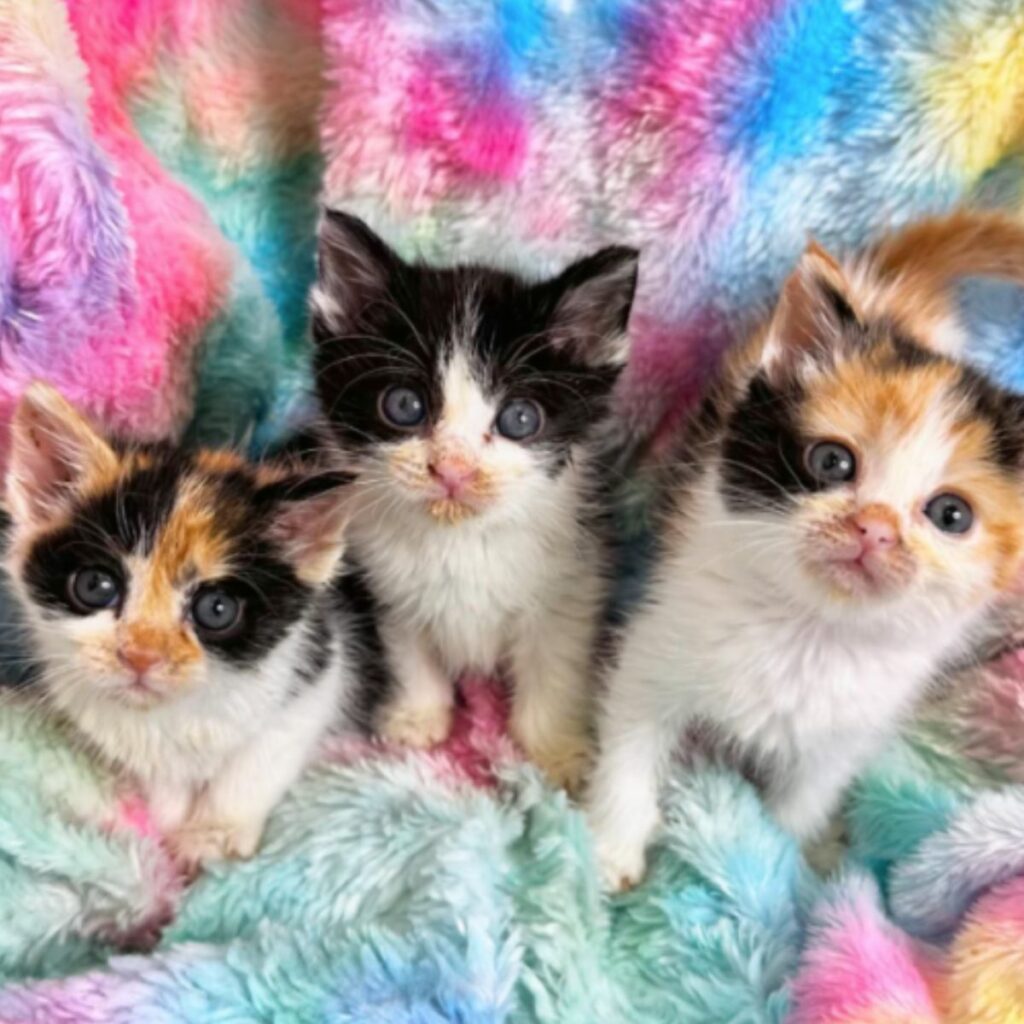You’re probably aware that cats have impressive night vision, but do you know why?
Unlike humans, cats’ eyes are specially adapted for low-light environments.
Their retinas are packed with rod cells, and they have a reflective layer called the tapetum lucidum.
This allows them to maximize any available light, making their eyes appear to glow in the dark.
However, can they truly see in complete darkness, or is that just a myth?
Let’s explore the fascinating science behind feline vision and find out what really happens when the lights go out.
The Science Of Feline Vision
Feline vision is a marvel of evolution, enabling cats to see in low-light conditions far better than humans can.
You might wonder how this is possible. Cats have a higher number of rod cells in their retinas, which are sensitive to dim light.
This allows them to detect even the slightest movements in near-darkness.
Additionally, cats have a wider field of view, around 200 degrees, compared to the human field of 180 degrees.
This broad vision helps them spot prey and navigate their environment efficiently, even in the dark.
Moreover, cats can rapidly adjust their pupils, which expand to let in more light, enhancing their night vision.
So, when it’s dark, your cat is still quite capable of seeing.
Anatomy Of A Cat’s Eye
Understanding how cats see so well in the dark requires a closer look at the unique anatomy of their eyes.
First, you’ll notice their large corneas and pupils, which allow more light to enter.
Their retinas have a high concentration of rod cells, which are more sensitive to low light.
Additionally, cats possess a structure called the tapetum lucidum, a layer of reflective cells that enhances their night vision by reflecting light back through the retina.
This creates that familiar glow you see when light shines in their eyes at night.
Lastly, their slit-shaped pupils can adjust quickly to different lighting conditions, giving them an advantage in both bright and dim environments.
All these features work together to optimize their vision in the dark.
Low-Light Adaptations
Thanks to their specialized eye structure, cats have several remarkable adaptations that allow them to navigate and hunt effectively in low-light conditions.
Their eyes have a higher number of rod cells, which are more sensitive to dim light than cone cells.
This gives them superior night vision compared to humans.
Additionally, cats possess a tapetum lucidum, a reflective layer behind the retina that enhances light sensitivity by bouncing light back through the retina.
You’ll notice their eyes glowing in the dark because of this layer.
Cats also have large pupils that can expand significantly to let in as much light as possible.
These adaptations mean your feline friend can see well in conditions where you might struggle to see anything at all.
Myth Busting Cat Vision
While cats indeed have impressive low-light vision, several misconceptions about their abilities persist.
You might’ve heard that cats can see in total darkness, but that’s not true.
Cats need some light, however minimal, to see.
Their eyes are designed to make the most of low-light conditions, thanks to a higher number of rod cells which are more sensitive to dim light. Another myth is that cats see in black and white.
In reality, they can see colors, though not as vividly as humans. They primarily see blues and greens, but reds and pinks can appear as shades of gray.
Enhancing Your Cat’s Night Vision
To help your cat navigate better at night, consider adding a few dim lights or nightlights around your home.
While cats have excellent night vision, a bit of extra light can make a big difference, especially for older cats.
Place these lights in hallways, near litter boxes, and around feeding areas.
You can also increase your cat‘s ability to see in low light by providing a diet rich in Vitamin A and taurine, which are essential for eye health. Interactive toys that encourage hunting behavior can help sharpen their night vision skills.
Frequently Asked Questions
How Does A Cat’s Vision Compare To A Human’s In Daylight?
You might wonder how a cat‘s vision stacks up against yours in daylight.
While cats excel in low light, their daytime vision is less sharp and colorful compared to humans.
They see fewer details and colors.
Do All Breeds Of Cats Have The Same Night Vision Capabilities?
You might wonder if all cat breeds have the same night vision. They don’t.
While all cats see well in low light, some breeds, like Siamese, may have slightly less effective night vision due to genetic differences.
Can Kittens See In The Dark As Well As Adult Cats?
Kittens can see in the dark, but not as well as adult cats. Their night vision improves as they mature.
You’ll notice their skills getting better with time, just be patient as they grow and develop.
How Does A Cat’s Diet Affect Its Vision?
You want to know how a cat‘s diet affects its vision.
A balanced diet rich in taurine, vitamin A, and omega-3 fatty acids is crucial.
Without these nutrients, a cat‘s vision can deteriorate, leading to serious eye issues.
Are There Any Health Issues That Can Impair A Cat’s Night Vision?
Yes, health issues can impair a cat‘s night vision.
Cataracts, glaucoma, and retinal diseases are common problems.
If you notice any changes in your cat‘s vision, you should consult your vet for a proper diagnosis and treatment.
Conclusion
So, can cats see in a dark room? Thanks to their unique eye anatomy, they can navigate dim spaces quite well.
With more rod cells, the tapetum lucidum, and quick-adjusting pupils, cats make the most of any available light.
While they can’t see in complete darkness, they excel in low-light conditions, and their eyes might even glow.
Understanding these adaptations helps you appreciate just how remarkable your feline friend’s vision truly is.







